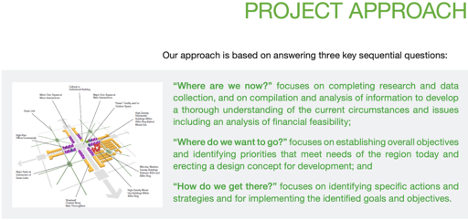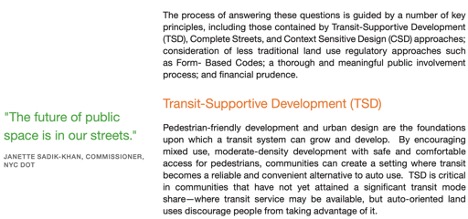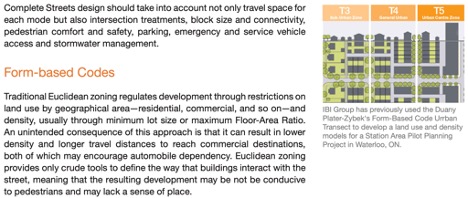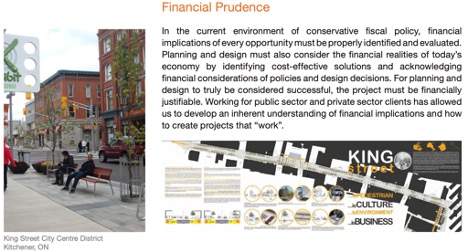Winning RFP Response Examples and Tips For Proposal Writers
If you’ve read 5 Winning RFP Responses and Why They Worked – Part One, then you know that searching the internet for “winning RFP responses” and “successful RFP proposal examples” is a fruitless endeavor. Successful RFP responses are rarely posted online, lest a firm divulge the vital secrets of their winning proposal strategy.
Unfortunately, anyone looking for a real-world example of a winning RFP response is bound to commit significant time and resources to the research process. Fortunately, we already took care of that process for you. Here you will find real life proposals and successful RFP response examples to use as a guide for your own proposal.
Successful RFP Response Example: IBI Group Proposal to the City of Portland, ME
The first part of this series on winning RFP responses is focused on Cisco’s proposal to the State of Utah Division of Purchasing and General Services. It’s noteworthy because it is tailored to the needs of the client and relies heavily on the use of case studies and real world examples to build confidence in the reader.
This article will focus on the IBI Group’s Proposal to the City of Portland, Maine, which is significant for its project understanding and project approach sections that:
- prove IBI Group’s full understanding of the project,
- explain the key ideas and concepts, and
- detail the actions the vendor will take to address specific issues.
Include a Project Understanding
The project understanding (alt. project description) section of an AEC proposal provides a high-level overview of the project’s objective, its essential qualities and the reasons why the firm would like to undertake the project.
Like an elevator pitch, the project understanding section should briefly answer the “what” and “why” of the project without delving into the “how”. The following is an excerpt from IBI’s successful RFP response. Note how it outlines known challenges, and describes in detail how those challenges may affect the project.
“Forest Avenue is a vital link connecting downtown Portland to its most dense outlying neighborhoods, retail and employment centers, the University of Southern Maine, and also to the outskirts of the City of Westbrook… However, these statements do not begin to tell the full story of Forest Avenue.
As described in the Request for Proposals (RFP), the study area encompasses sections of the corridor that differ radically in character. The IBI Group team offers a project approach that will recognize these differences and will guide the city and the community in selecting a transportation and land use strategy that will be sensitive to the contextual details within and outside the study area.”
Note how this section outlines known challenges and acknowledges the contextual details that may affect the project. By highlighting these specific challenges, the proposal writers demonstrate that they are thinking deeply and analytically about the project proposed in the RFP.
Provide a Project Approach and Timeline
IBI’s proposal is also noteworthy because it provides a working project timeline, which demonstrates the feasibility of the firm’s involvement and insight into their process, systems, and action steps. In addition to a timeline, they also include a detailed project approach section.

The project approach section of this proposal is impressive because it not only contextualizes their response to actual challenges, it shows that they understand how their solution must fit into the environment.

Note in the above excerpt how the proposal writers connect the proposed solution to the various parts of the problem statement and requirements laid out in the RFP. By doing so, they not only answer the requirements outlined in the RFP, they also create a narrative that allows the customer to visualize their success as a result of the partnership.

Most importantly, the proposal writers include a variety of high quality digital assets that showcase their experience with similar projects.

These images, graphics and renderings not only enhance the design aspect of the proposal, they also prove that their approach is credible and relevant through case studies and supporting data.
Utilize Design Elements and Digital Asset Management Software
Impactful design, helpful graphics and high quality photography are all, in fact, vital to creating a successful proposal. The AEC industry, in particular, is especially reliant on digital assets like project photos, property videos and architectural renderings to demonstrate their solutions and showcase their success.
It’s clear from reading IBI’s RFP response that they know how to create winning proposals, but also how they utilize design tools and digital asset management (DAM) software to help them do it.
In fact, a recent survey of more than 500 AEC professionals revealed that 57% of AEC marketers said they leverage a DAM solution like OpenAsset to manage their images, brand material, and other digital assets.
Among those already using DAM technology, more than 75% experienced higher productivity, increased efficiency, and quicker turnaround times on proposals, RFP responses, and other projects.
Continued Reading: 5 Winning RFP Responses and Why They Worked – Part Three
Many of the proposal writing tools and design solutions used by IBI’s proposal writers are explained in specific detail in our guide on How to Build a Marketing Technology (Martech) Stack.
Combined with the insight provided in this article, you will have the tools and information you need to respond to RFPs and create winning proposals like the pros.
Stay tuned for the third installment of this series – 5 Winning RFP Responses and Why They Worked. Don’t forget to contact OpenAsset today to schedule a demo of the only martech solution designed specifically for firms in the built world.



